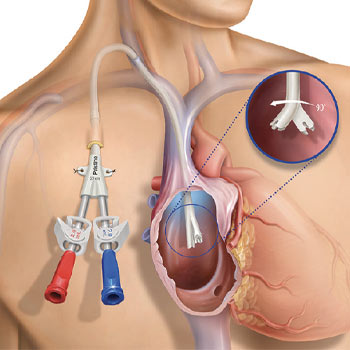Haemodialysis Sheath Placement
- Home
- Services
- Pulmonology
- Haemodialysis Sheath Placement
Haemodialysis is a life-saving procedure for patients with end-stage renal disease (ESRD) or severe kidney dysfunction. The process involves the removal of waste products and excess fluids from the blood when the kidneys can no longer perform these functions efficiently. One crucial aspect of haemodialysis is the placement of a sheath, which allows access to the patient’s bloodstream. Understanding haemodialysis sheath placement is vital for both healthcare providers and patients to ensure the effectiveness and safety of the procedure.
What is Haemodialysis Sheath Placement?
A haemodialysis sheath, also known as a catheter or vascular access sheath, is a flexible, hollow tube inserted into a large vein to facilitate the process of haemodialysis. This sheath serves as a conduit for blood to flow out of the body to the dialysis machine, where it gets filtered and then returned to the body. There are two main types of haemodialysis sheaths: temporary (short-term) and permanent (long-term).

Types of Haemodialysis Sheaths
Temporary Sheath
Typically used for urgent or short-term dialysis, temporary sheaths are inserted into large veins, such as the internal jugular, femoral, or subclavian veins. These sheaths are designed for immediate use but are not intended for long-term dialysis due to the risk of infection and other complications
Permanent Sheath
Permanent sheaths, also known as tunneled catheters, are used for long-term haemodialysis. These catheters are placed under the skin and tunneled into a large vein, usually the internal jugular or subclavian vein. They are designed to be more durable and have a lower risk of infection compared to temporary sheaths
Importance of Haemodialysis Sheath Placement
Proper placement of the haemodialysis sheath is critical for the effectiveness of the dialysis treatment. It ensures adequate blood flow to the dialysis machine and reduces the risk of complications. For patients relying on long-term haemodialysis, a well-placed sheath can significantly improve their quality of life and treatment outcomes
Haemodialysis sheath placement is a fundamental procedure in the management of patients with severe kidney dysfunction. Understanding the types of sheaths, the placement procedure, and the importance of post-procedure care is essential for ensuring the success of haemodialysis treatments. With proper technique and care, complications can be minimized, allowing patients to receive the life-saving dialysis they need.
